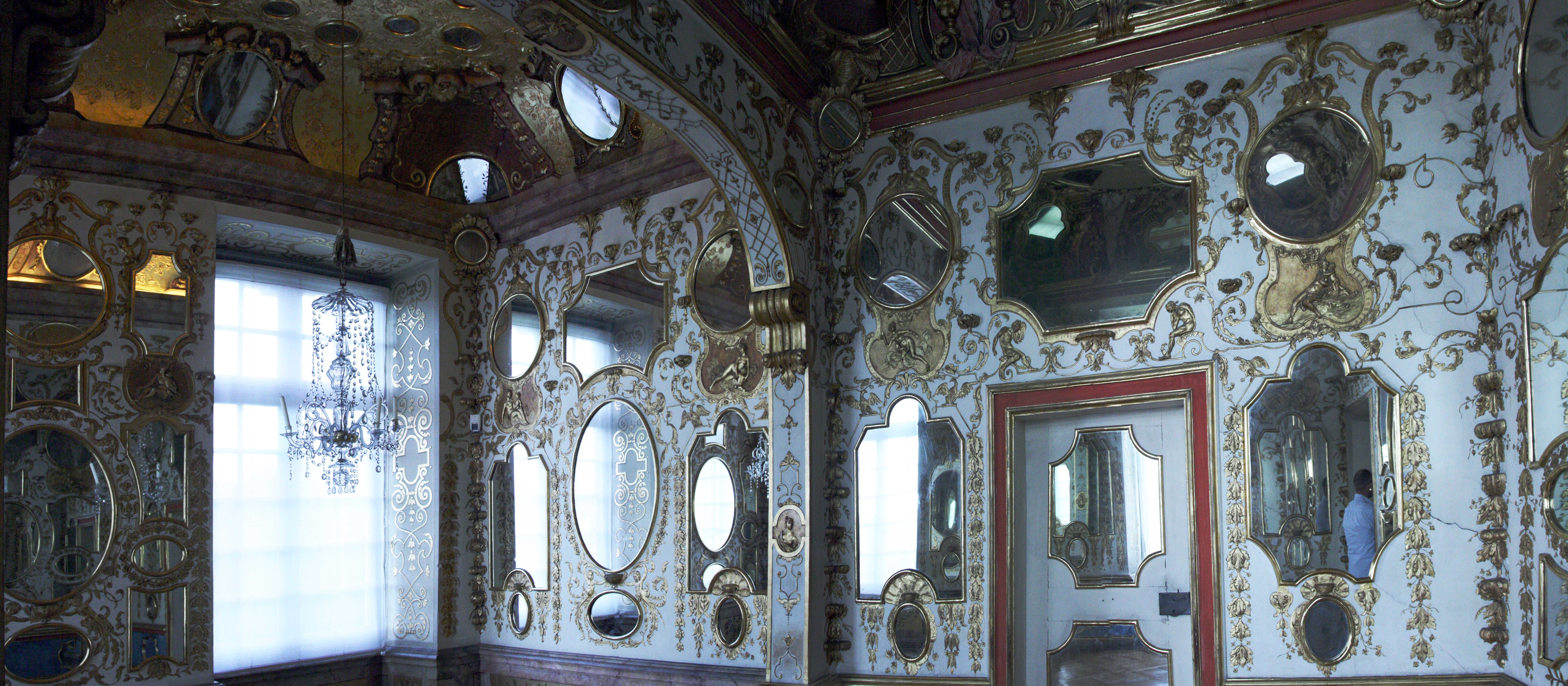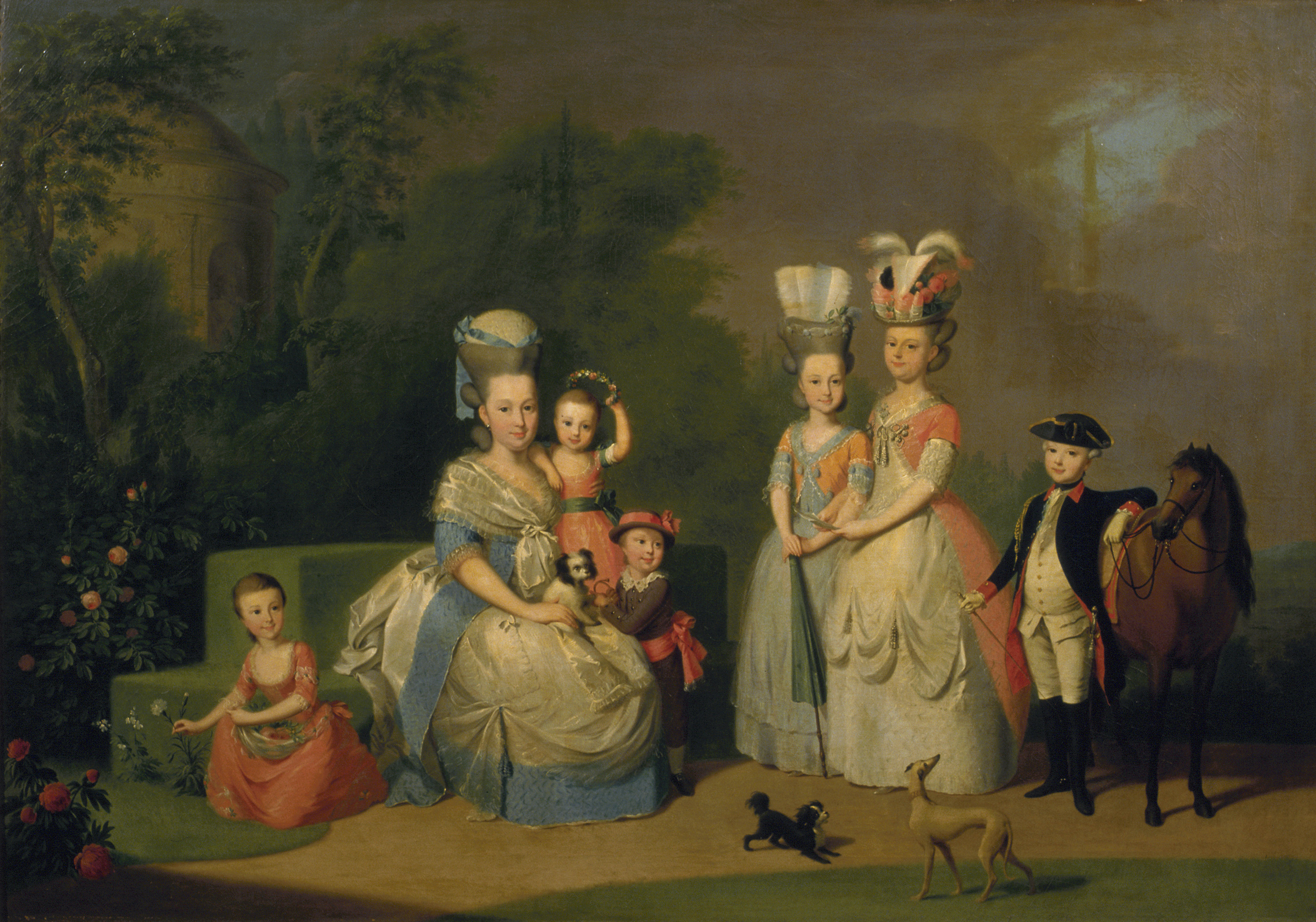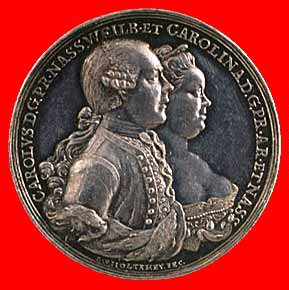|
Duchess Elisabeth Alexandrine Of Württemberg
, house = Württemberg , father = Duke Louis of Württemberg , mother = Princess Henriette of Nassau-Weilburg , birth_date = , birth_place = Würzau , death_date = , death_place = Karlsruhe, Germany Duchess Elisabeth Alexandrine Constance of Württemberg (27 February 1802 in Würzau, Courland Governorate – 5 December 1864, in Karlsruhe) was a daughter of Duke Louis of Württemberg and Princess Henriette of Nassau-Weilburg. Family Elisabeth was one of five children born to Duke Louis of Württemberg and his second wife Princess Henriette of Nassau-Weilburg. Her siblings included Queen Pauline of Württemberg and Duke Alexander of Württemberg, the founder of the Teck branch of the family. She was tutored by her governess, the known memoirist Alexandrine des Écherolles, who described her pupils in her memoirs.Side Lights on the Reign of Terror; being the memoirs of Mademoiselle des Écherolles (London, 1900) Marriage and children Elisabeth m ... [...More Info...] [...Related Items...] OR: [Wikipedia] [Google] [Baidu] |
Prince William Of Baden
Margrave Wilhelm of Baden (8 April 1792 in Karlsruhe – 11 October 1859 in Karlsruhe) was the second son of Karl Friedrich, Grand Duke of Baden and his second wife, Luise Karoline, Baroness Geyer von Geyersberg (26 May 1768 – 23 July 1820), the daughter of Lt. Col. Baron Ludwig Heinrich Philipp Geyer von Geyersberg and his wife, Countess Maximiliana Christiane von Sponeck. Because his marriage to Luise was considered by the House of Baden as morganatic, Wilhelm, for a time, had no succession rights to the Grand Duchy. Marriage and family He married on 16 October 1830, Duchess Elisabeth Alexandrine of Württemberg (27 February 1802 – 5 December 1864), the daughter of Duke Louis of Württemberg. They had the following children: *Princess Henriette of Baden (7 May 1833 – 7 August 1834) *Princess Sophie of Baden (7 August 1834 – 6 April 1904), married Woldemar, Prince of Lippe on 9 November 1858, no issue. *Princess Elisabeth of Baden (18 December 1835 – 15 May 1891 ... [...More Info...] [...Related Items...] OR: [Wikipedia] [Google] [Baidu] |
Grand Duchy Of Baden
The Grand Duchy of Baden (german: Großherzogtum Baden) was a state in the southwest German Empire on the east bank of the Rhine. It existed between 1806 and 1918. It came into existence in the 12th century as the Margraviate of Baden and subsequently split into the states of Baden-Durlach and Baden-Baden, which were reunified in 1771. It then became the much-enlarged Grand Duchy of Baden after the dissolution of the Holy Roman Empire from 1803 to 1806 and was a sovereign country until it joined the German Empire in 1871. In 1918, it became part of the Weimar Republic as the Republic of Baden. Baden was bordered to the north by the Kingdom of Bavaria and the Grand Duchy of Hessen-Darmstadt; to the west, along most of its length, by the river Rhine, which separated Baden from the Bavarian Rhenish Palatinate and Alsace in modern France; to the south by Switzerland; and to the east by the Kingdom of Württemberg, the Principality of Hohenzollern-Sigmaringen and Bavaria. After ... [...More Info...] [...Related Items...] OR: [Wikipedia] [Google] [Baidu] |
House Of Nassau
The House of Nassau is a diversified aristocratic dynasty in Europe. It is named after the lordship associated with Nassau Castle, located in present-day Nassau, Rhineland-Palatinate, Germany. The lords of Nassau were originally titled "Count of Nassau", then elevated to the princely class as "Princely Counts". Early on they divided into two main branches: the elder (Walramian) branch, that gave rise to the German king Adolf, and the younger (Ottonian) branch, that gave rise to the Princes of Orange and the monarchs of the Netherlands. At the end of the Holy Roman Empire and the Napoleonic Wars, the Walramian branch had inherited or acquired all the Nassau ancestral lands and proclaimed themselves, with the permission of the Congress of Vienna, the "Dukes of Nassau", forming the independent state of Nassau with its capital at Wiesbaden; this territory today mainly lies in the German Federal State of Hesse, and partially in the neighbouring State of Rhineland-Palatinate. The D ... [...More Info...] [...Related Items...] OR: [Wikipedia] [Google] [Baidu] |
Charles August, Prince Of Nassau-Weilburg
Charles August; 17 September 1685, Weilburg – 9 November 1753) was from 1719 to 1753 Prince of Nassau-Weilburg. Charles August was the second son of John Ernst of Nassau-Weilburg and Maria Polyxena of Leiningen-Dagsburg-Hartenburg. In his youth, he worked as a diplomat for Saxony; for a while he was the Saxon ambassador in Paris. He succeeded his father as Prince in Weilburg on 27 February 1719. In 1733 and 1734, he commanded the imperial troops on the Rhine as an imperial cavalry general. In 1737 he assumed the title of Prince, which family had been awarded in 1688. In 1688 the family had not, however, obtained a seat on the princely bench in the Imperial Diet, and in protest, they had not used their title. In 1737, the seat in the diet was finally awarded and Charles August started using his princely title. Charles August died in 1753 and was buried in the chapel of Weilburg. He was succeeded by his son Charles Christian after. Descendants Charles August married on 17 ... [...More Info...] [...Related Items...] OR: [Wikipedia] [Google] [Baidu] |
Princess Sophia Dorothea Of Prussia
Princess Sophia Dorothea of Prussia (german: Sophia Dorothea Marie von Preußen; 25 January 1719 – 13 November 1765) was the ninth child and fifth daughter of Frederick William I of Prussia and Sophia Dorothea of Hanover. By marriage, she was a Margravine of Brandenburg-Schwedt. Biography Marriage and children On 10 November 1734 in Potsdam, Sophia Dorothea married her Hohenzollern kinsman Frederick William, Margrave of Brandenburg-Schwedt, son of Philip William, Margrave of Brandenburg-Schwedt, and Princess Johanna Charlotte of Anhalt-Dessau, daughter of John George II, Prince of Anhalt-Dessau. They had five children: * Princess Friederike of Brandenburg-Schwedt (18 December 1736 – 9 March 1798); married Frederick II Eugene, Duke of Württemberg. * Princess Anna Elisabeth Louise of Brandenburg-Schwedt (22 April 1738 – 10 February 1820); married her uncle Prince Augustus Ferdinand of Prussia. * Prince Georg Philipp of Brandenburg-Schwedt (10 September 1741 – 28 April ... [...More Info...] [...Related Items...] OR: [Wikipedia] [Google] [Baidu] |
Frederick William, Margrave Of Brandenburg-Schwedt
Frederick William of Brandenburg-Schwedt (17 November 1700 – 4 March 1771) was a German nobleman. In his lifetime, from 1711 to 1771, he held the titles Prince in Prussia and Margrave of Brandenburg, with the style Royal Highness. He was made a knight of the Order of the Black Eagle. In the 19th century he was retrospectively known by the title Margrave of Brandenburg-Schwedt, in order to differentiate his branch of the Hohenzollern dynasty. He was the second owner of the Prussian secundogeniture of Brandenburg-Schwedt. His parents were Philip William, Margrave of Brandenburg-Schwedt, and Princess Johanna Charlotte of Anhalt-Dessau. He was the nephew of King Frederick I of Prussia. Life Frederick William was known as a brutal man because of his short temper, severity, and coarse manners. He was born at Oranienbaum Castle (modern-day Oranienbaum-Wörlitz, Wittenberg), and was educated and raised by his uncle, King Frederick I, and then by his cousin, King Frederick William I ... [...More Info...] [...Related Items...] OR: [Wikipedia] [Google] [Baidu] |
Princess Marie Auguste Of Thurn And Taxis
, house = Thurn and Taxis , father =Anselm Franz, 2nd Prince of Thurn and Taxis , mother =Maria Ludovika Anna Franziska, Princess of Lobkowicz , birth_date = , birth_place =Frankfurt am Main, Hesse , death_date = , death_place =Göppingen, Duchy of Württemberg , religion =Roman Catholic Princess Marie Auguste Anna of Thurn and Taxis (11 August 1706 – 1 February 1756) was a Regent of Württemberg. By birth she was a member of the Princely House of Thurn and Taxis and through her marriage to Karl Alexander, Duke of Württemberg, she became Duchess consort of Württemberg. Early life Marie Auguste was born on 11 August 1706 as a daughter of Anselm Franz, 2nd Prince of Thurn and Taxis and his wife, Princess Maria Ludovika Anna Franziska of Lobkowicz (1683-1750). She grew up in the Austrian Netherlands and later moved to Frankfurt, where her family's wealth and economic interests were based.Wilson, p. 240. Her only brother was Alexander F ... [...More Info...] [...Related Items...] OR: [Wikipedia] [Google] [Baidu] |
Charles Alexander, Duke Of Württemberg
Charles Alexander of Württemberg (24 January 1684 – 12 March 1737) was a Württemberg Duke from 1698 who governed the Kingdom of Serbia as regent from 1720 until 1733, when he assumed the position of Duke of Württemberg, which he held until his death. Early life Born in Stuttgart, he was the eldest son of Frederick Charles, Duke of Württemberg-Winnental and his wife, Margravine Eleonore Juliane of Brandenburg-Ansbach.https://www.genealogics.org/getperson.php?personID=I00009197&tree=LEO Biography He succeeded his father as Duke of Württemberg-Winnental in 1698. As a successful army-commander in service of the Holy Roman Emperor, he had converted to Roman Catholicism in 1712. He was militarily successful under Prince Eugene of Savoy in the Spanish War of Succession as well as in the Ottoman–Venetian War. In 1719 he was appointed imperial governor of Belgrade. In 1720 Holy Roman Emperor Charles VI appointed him governor of the Kingdom of Serbia in Belgrade. While in ... [...More Info...] [...Related Items...] OR: [Wikipedia] [Google] [Baidu] |
Princess Carolina Of Orange-Nassau
Princess Carolina of Orange-Nassau (''Wilhelmine Carolina''; 28 February 1743 – 6 May 1787) was a Dutch regent. She was the daughter of William IV, Prince of Orange, Stadtholder of the Netherlands, and Anne, Princess Royal. She was regent of the Netherlands from 1765 until 1766 during the minority of her brother, William V. Life Princess Carolina was born in Leeuwarden, the eldest daughter of William IV, Prince of Orange, Stadtholder of the Netherlands, and Anne, Princess Royal. In 1747, it was declared that the position of stadtholder could be inherited by females, thus making the young Princess Carolina the heir presumptive to the position of stadtholder. However, in 1748, a male heir, William, was born to her parents, thus displacing her and putting her second in line to the position. She was given a good education in music. Princess Carolina's father died in 1751, making her three-year-old brother William V of Orange. At that point, her mother was appointed regent. Her marria ... [...More Info...] [...Related Items...] OR: [Wikipedia] [Google] [Baidu] |
Charles Christian, Prince Of Nassau-Weilburg
Charles Christian, Prince of Nassau-Weilburg (Weilburg, 16 January 1735 – Münster-Dreissen, near Kirchheim, 28 November 1788), till 1753 Count of Nassau-Weilburg, was the first ruler of the Principality of Nassau-Weilburg between 1753 and 1788. Family and rule He was the son of Charles August, Prince of Nassau-Weilburg and Princess Auguste Friederike of Nassau-Idstein. He succeeded his father in 1753 and united his territories in 1783 with Nassau-Saarbrücken, Nassau-Usingen and Nassau-Dietz. Marriage He married on 5 March 1760 in The Hague Princess Carolina of Orange-Nassau (1743–1787), daughter of William IV, Prince of Orange and Anne, Princess Royal. He became a general in the Dutch infantry, governor of Bergen op Zoom and governor of Maastricht (1773–1784). He negotiated in vain with the Patriots in 1787. After the death of his wife, he concluded a morganatic marriage with Barbara Giessen von Kirchheim. He died in 1788 and was succeeded by his eldest surviving so ... [...More Info...] [...Related Items...] OR: [Wikipedia] [Google] [Baidu] |
Margravine Friederike Of Brandenburg-Schwedt
Friederike of Brandenburg-Schwedt (Friederike Sophia Dorothea; 18 December 1736 – 9 March 1798) was Duchess of Württemberg by marriage to Frederick II Eugene, Duke of Württemberg. She is an ancestor to many European royals of the 19th and 20th century. Biography Friederike was a daughter of Margrave Frederick William of Brandenburg-Schwedt and Princess Sophia Dorothea of Prussia. Her mother was a sister of Frederick the Great. Her siblings included Elisabeth Louise, Princess Augustus Ferdinand of Prussia and Philippine, Landgravine of Hesse-Cassel. On 2 November 1753, she married Frederick Eugen of Württemberg. He would succeed his brother in 1795, making her Duchess consort of Württemberg. Friederike was described as witty and charming. She belonged to the reformed faith, while her husband was Catholic; however, she brought up her children as Lutheran upon agreement with the Lutheran council, from whom she received an allowance. From 1769, she lived at Montbélia ... [...More Info...] [...Related Items...] OR: [Wikipedia] [Google] [Baidu] |
Frederick II Eugene, Duke Of Württemberg
Friedrich Eugen, Duke of Württemberg (21 January 1732 – 23 December 1797) was the fourth son of Karl Alexander, Duke of Württemberg, and Princess Maria Augusta of Thurn and Taxis (11 August 1706 – 1 February 1756). He was born in Stuttgart. From 1795 until 1797 he was Duke of Württemberg. Soldier After serving with Frederick the Great during the Seven Years' War, he took up residence in 1769 at his family's exclave, the County of Montbéliard, of which he was also made lieutenant-general in March 1786 by his eldest brother, Charles Eugene, Duke of Württemberg, who had begun to come into the inheritance of portions of the County of Limpurg in the 1780s. He bought the castle and lordship of Hochberg in 1779, but re-sold it in 1791 to his brother. The next year he was named governor of the margraviate of Ansbach-Bayreuth by King Frederick William II of Prussia, to whom it had been sold by the last prince of that branch of the House of Hohenzollern. Montbéliard was tak ... [...More Info...] [...Related Items...] OR: [Wikipedia] [Google] [Baidu] |

.png)


